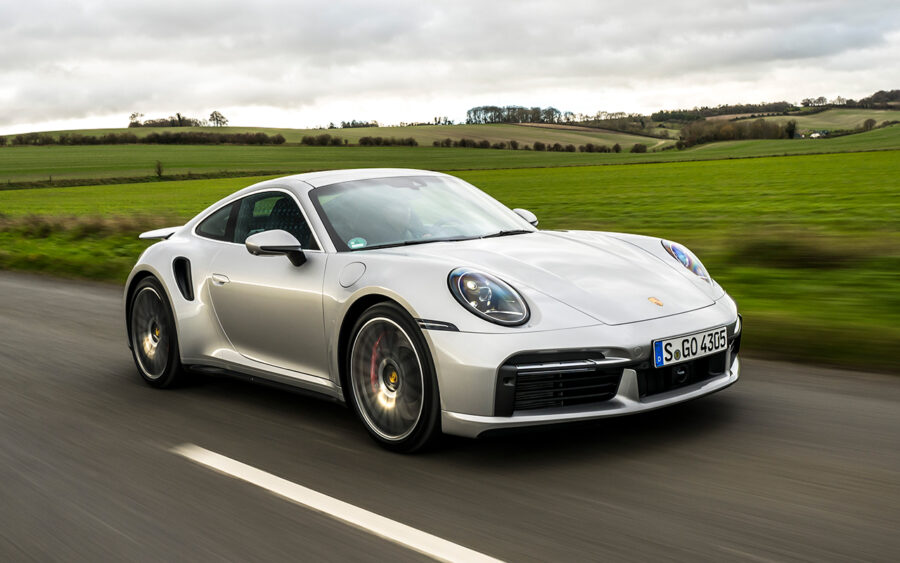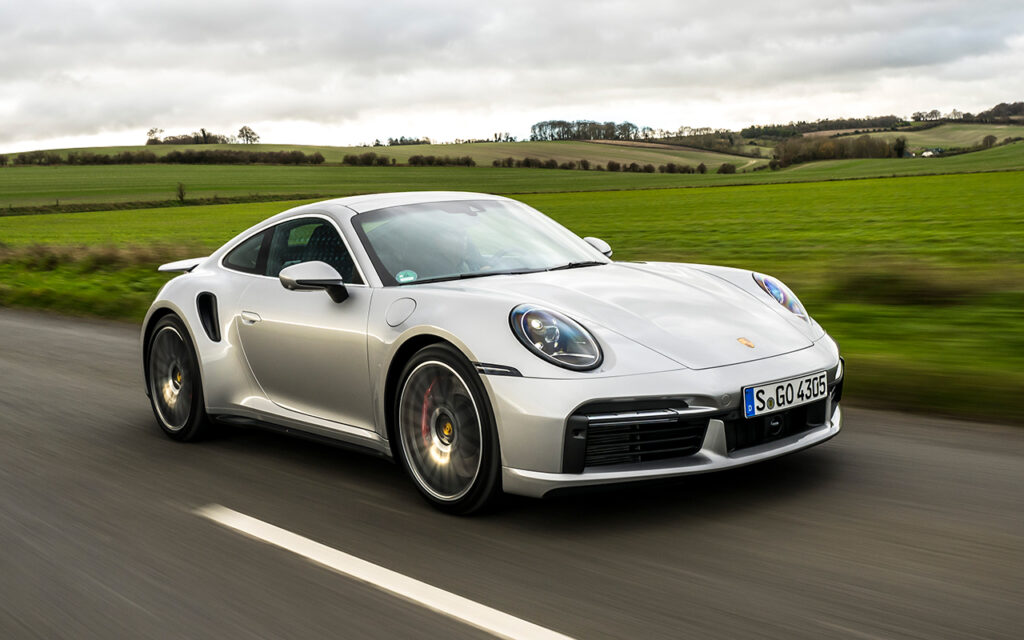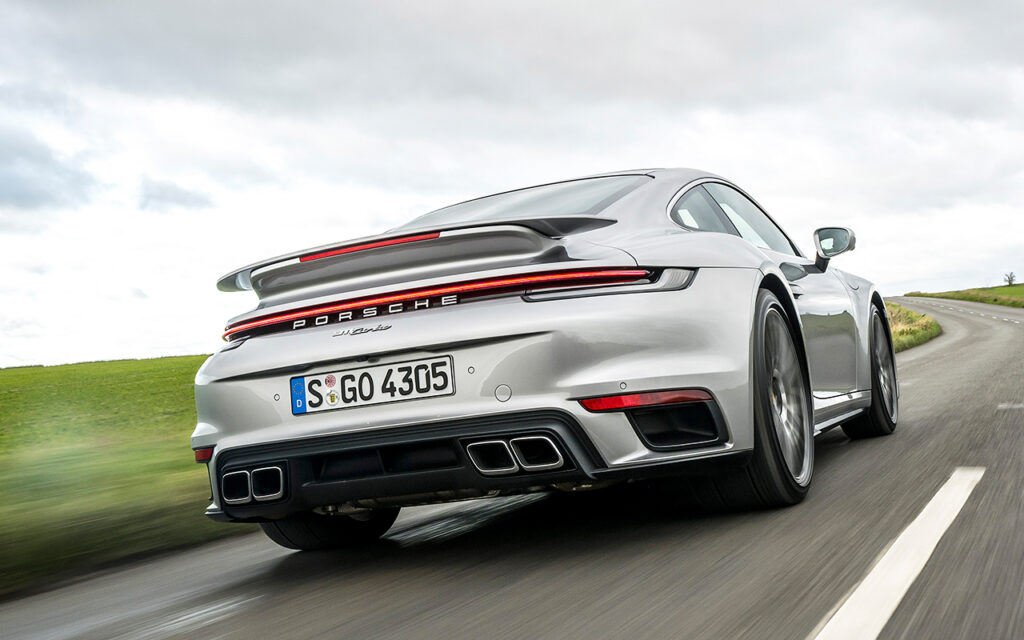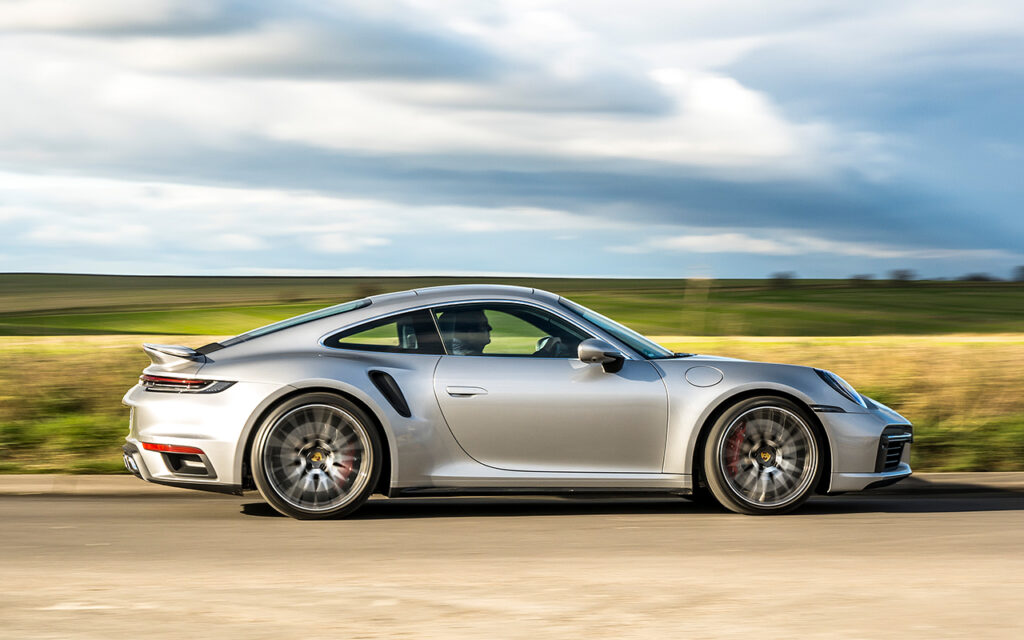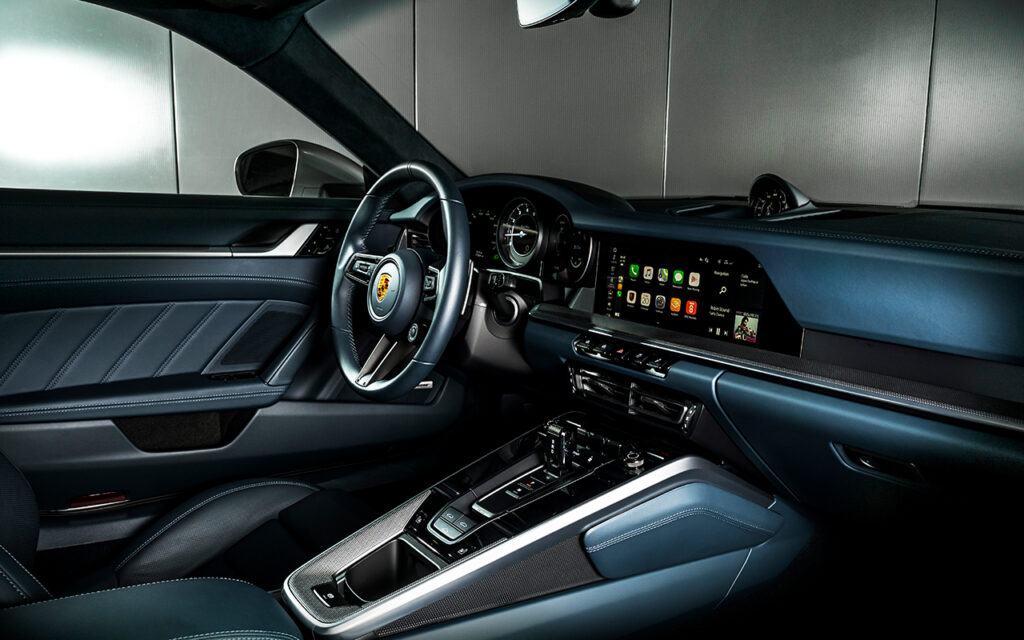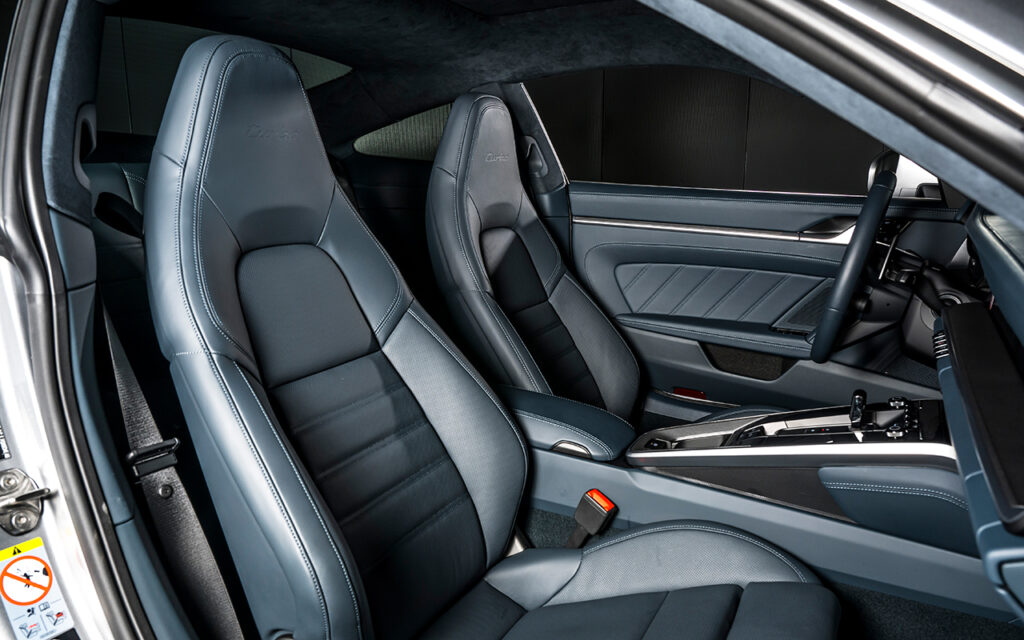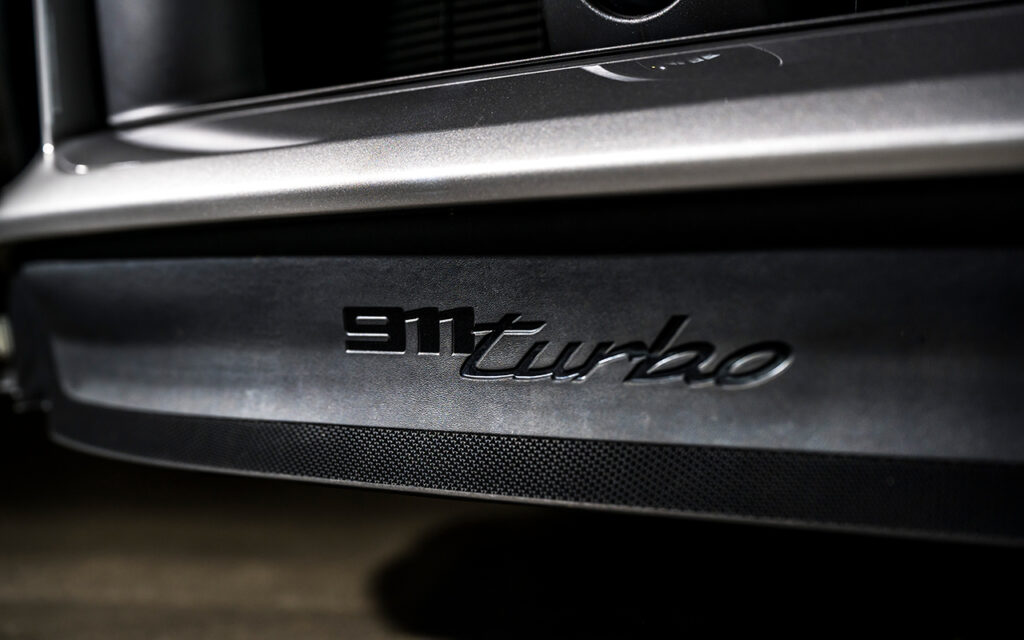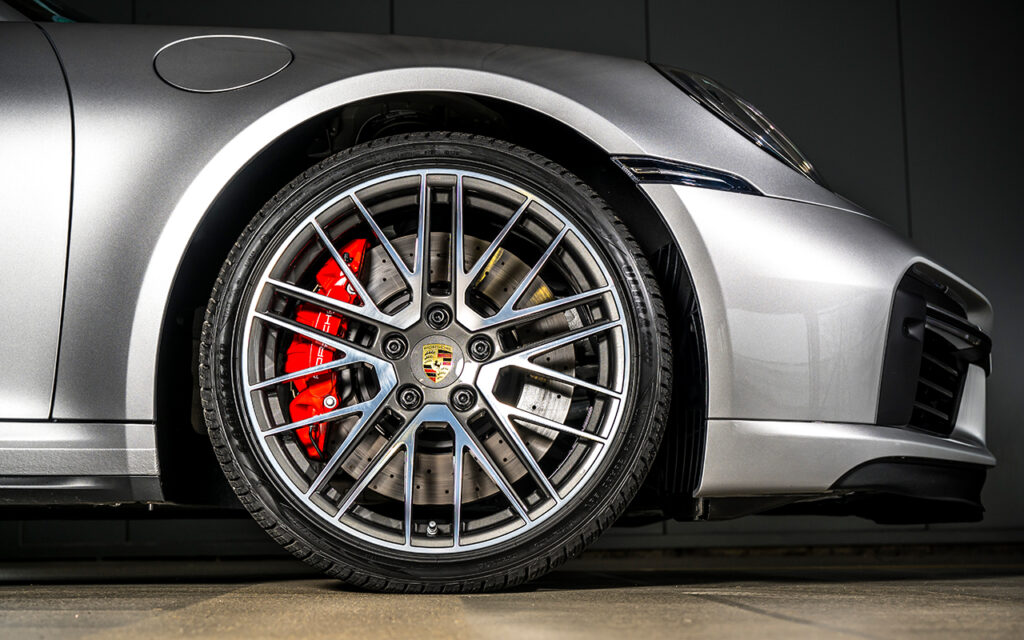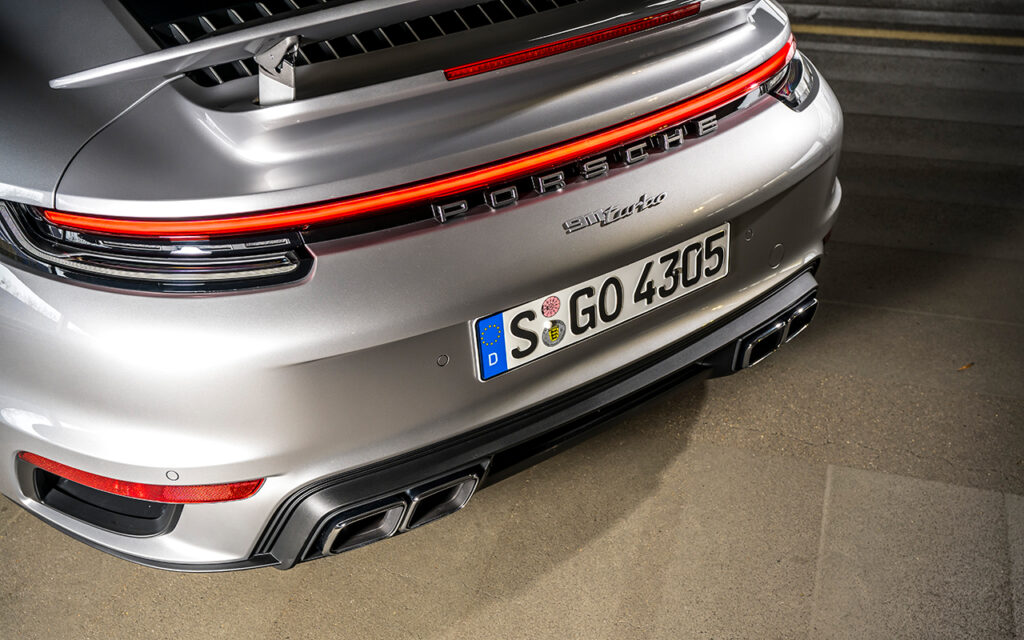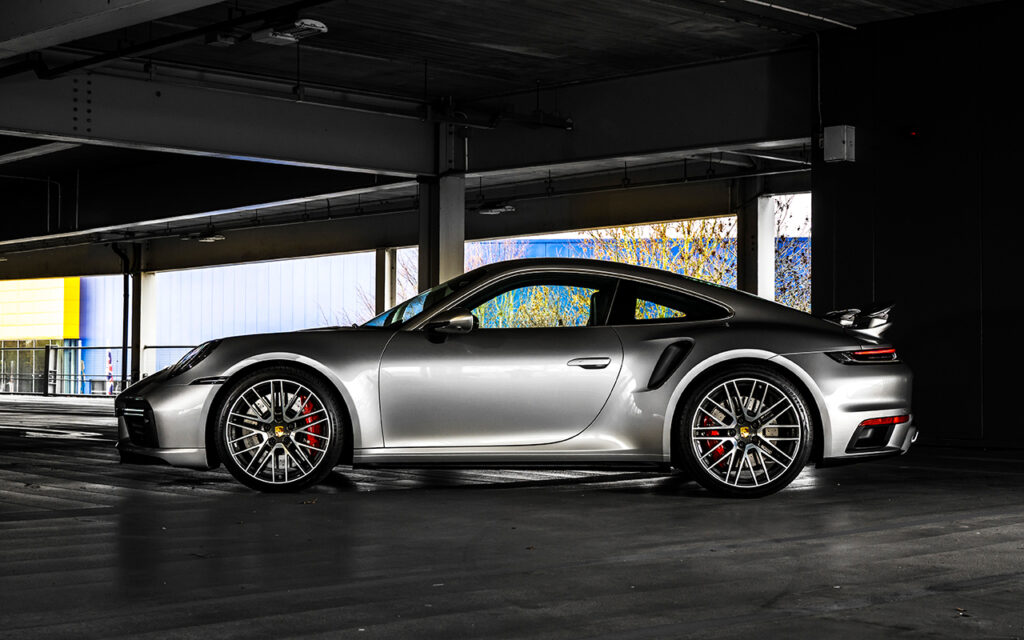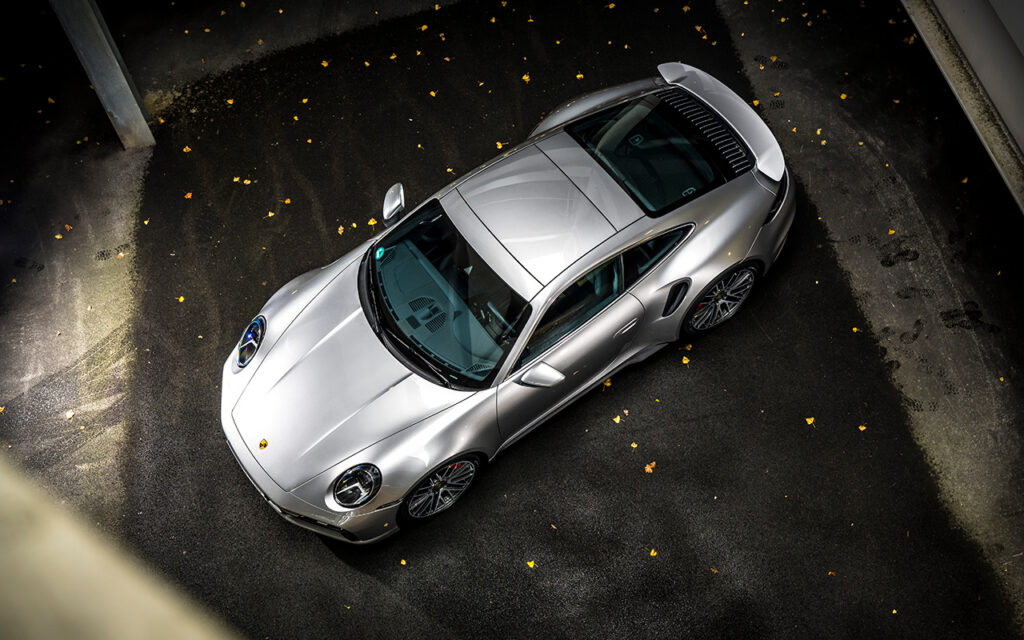Despite the 911 Turbo no longer being the range-topper it once was, the 572bhp 992 variant is still capable of incredible things
You press the gas pedal in the 992-generation 911 Turbo and it feels as if the throttle is trying to push your eyeballs into the back of your head. It is ridiculous. Such power and performance — all corralled into the familiar form of Porsche’s evergreen rear-engined sports machine — shouldn’t really be this wieldy and accessible, but the fact the Turbo isn’t even the pinnacle of the current 911 breed is even more astounding than how generally civil this land-based missile actually is. Yep, in the 2020s, you have to wrangle with the concept a 572bhp 911 chucking out 554lb-ft and 199mph isn’t enough to be considered a range-topper. Never mind that these are the same numbers the run-out 991 Gen II Turbo S toted, or that the 992 Turbo is a tenth of a second quicker to 62mph from rest (a dash taking just 2.8 seconds) than said older Turbo S could achieve. This new Porsche (well, hypercar, really), is not king of its own particular hill. That crown rests atop the head of the 992 Turbo S, which delivers an eye-watering 641bhp and 590lb-ft.
For what it’s worth, on the paper-listed metrics alone, the ‘S’ added to the nameplate of your widebody 911 gains you another tenth of a second off the quoted zero to 62mph sprint, resulting in a 2.7-second rocket launch (there’s no other way to describe it — ‘acceleration’ doesn’t adequately cover the brutality of the experience) and an additional 6mph on top speed. Crucially, if you’re into bragging rights, the 992 Turbo S takes you beyond the magical double-ton barrier and on to 205mph. The 992 Turbo has to make do with a ‘mere’ 199mph V-max. Oddly enough, despite being ‘only’ as powerful as the new Turbo and nowhere near as potent as the 992 Turbo S, the 991 Gen II Turbo S was said to be capable of 205mph flat out, too. However, when it comes to the 992s we’re talking about, there has to be something more to explain the price difference between the two. A tenth here and a 200mph-plus there just doesn’t cut it. We also need to know precisely why Porsche has put the cart before the horse, if you catch our drift, giving us the 641bhp showstopper before landing the 572bhp warm-up act in our midst. Sorry, we’re mixing our metaphors there. Ahem.
Moving swiftly on, let’s try and make sense of the 992 Turbo product line-up as it stands in early 2021. There are four variants to go at above the 444bhp Carrera S/4S line (the next 911s down the ziggurat): the new non-S Turbo models start at £139,160 for the Coupe and £148,960 for the Cabriolet (a difference of £9,800), while the Turbo S variants retail at £160,610 and £170,410 respectively — it’s the same price walk to go from the Turbo S tin-top to the Turbo S drop-top. In other words, there’s an additional £21,450 required to elevate from a 911 Turbo to a 911 Turbo S, no matter the body style you choose.
Surely you can’t be paying the far side of twenty-one grand just for an additional 69bhp, 36lb-ft and those incremental performance gains? Well, we say incremental — if you’ve got a long runway and you’re prepared to do endless drag races with a Turbo versus a Turbo S, you’ll start to see where the latter’s extra muscle makes itself apparent. The 641bhp model is 0.7 seconds quicker to 100mph from a standing start (5.6 plays 6.3 seconds) and more than a second ahead from rest to 124mph (8.4 versus 9.7 seconds), but look at that data again: the 572bhp Turbo can zip to 124mph in less than ten seconds. It’s also pretty strident for in-gear acceleration, demonstrated by the shift from 50mph to 75mph in such circumstances taking as little as 1.7 seconds.
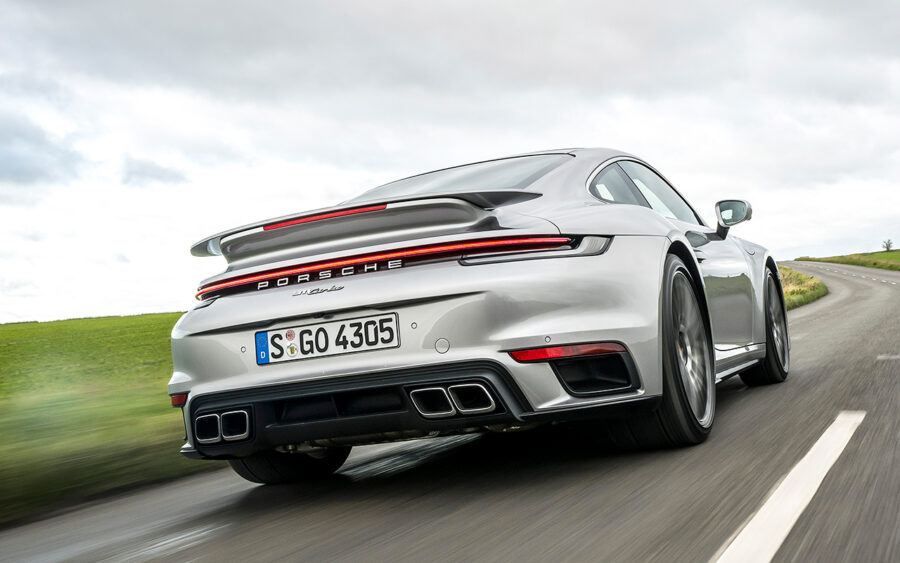
It’s not so much the numbers, but the mechanicals that make up the difference. Certain chassis-sharpening aids offered as standard equipment on the Turbo S are cost options on the Turbo. The two chief items are the active anti-roll bars operating under the Porsche Dynamic Chassis Control (PDCC) banner, as well as the mighty Porsche Carbon Ceramic Brakes (PCCB). Due to the fact these cost £2,273 and £6,801 respectively — comprising an extra £9,074 of equipment — the actual monetary value you could more reasonably ascribe to the pure straight-line performance difference between these two top-tier 911s is £12,376. Visually, there’s little to differentiate the two, beyond the badging on their rumps.
Kudos to Porsche’s factory press team for the way it specified our test car, refusing the obvious temptation to fit all the possible extras and simply turn this Turbo into an expensive Turbo S alternative, though one shorn of power and torque. In fact, very little was added to our 911’s list price, meaning the not-so-mellow yellow coupe retained its trademark quartet of square-shaped tailpipe tips poking out of the rear valance, as opposed to the huge twin ovals of the Turbo S’s Sports exhaust. The wheels were stock Turbo design alloys (twenty-one inches at the rear, twenty at the front) instead of upgraded Exclusive Design options. GT Silver metallic paint — a restrained but classy colour — costs precisely zero pounds and is one of twelve standard shades for the Turbo. Solids on offer are White, Black, Guards Red and Racing Yellow, while the metallics available are Carrara White, Jet Black, Agate Grey, Dolomite Silver, Gentian Blue, Night Blue, luscious Aventurine Green and, of course, GT Silver. That’s colour choice enough, you would think, but for the more visually adventurous among you, the Special Colour range (add £1,919) affords you the choice of Shark Blue, Carmine Red, Crayon, Lava Orange or Python Green.
The same story of tick-box restraint is evident inside our 992 Turbo. Porsche’s options amounted to less than £4,000, the majority of the money dropped on the electric tilt/slide sunroof (£1,203) and the Adaptive Cruise Control (£1,238). The Graphite Blue leather is one of four main hide colours that’s no-cost, while contrast Crayon stitching can be added to any of these hues to give Turbo buyers a choice of eight interior combinations to go at for full leather upholstery, with a further two involving Sport-Tex centres to the seats (no cost) and then two more under the Heritage Design banner.
Only two-tone leather (£422, four options) or Club Leather (£1,010, another four options) incur a cost here. What you’re left with is the typically brilliant 992 cabin, enlivened by various Turbo-specific touches and graphics. It’s obviously no more nor less capacious within than the Turbo S, the 2+2 seating configuration retained, albeit Porsche would rather you think of those vestigial back chairs as the boot, to the extent the manufacturer even quotes an official storage capacity for the rear seats of 264 litres, putting the 128-litre front boot of the 992 Turbo to shame.
Clearly, when compared to the 992 Turbo S, the 992 Turbo doesn’t lose anything, outside or in, when it comes to visual appeal. This fantastic 911 looks utterly terrific, all wide-shouldered aggression and flowing lines. The same active aerodynamics (extending the front splitter and raising the rear spoiler at certain speeds and in certain drive modes) are retained. The Turbo continues to run on Porsche Active Suspension Management (PASM) variable dampers and makes use of the same wide track (increased by 45mm at the front and 10mm at the rear, when compared to 911s lower down the pecking order), but our test car doesn’t have the Sport chassis upgrade, which costs an extra £1,052 for a 10mm drop in ride height.
What it does have is revised steering with rear-axle assistance (and the optional £185 variable-ratio Power Steering Plus), as well as full torque vectoring through the Porsche Torque Vectoring Plus (PTV Plus) electronically controlled limited-slip rear differential. Naturally, as a potent Turbo, this 992 features an eight-speed PDK transmission and transmits all of its phenomenal grunt to the ground through Porsche Traction Management (PTM) all-wheel drive.
Let’s jump back to the start, where accelerating in the 992 Turbo feels like you’re in one of those movie scenes depicting someone violently plunging their thumbs into a rival’s eyeballs during a grapple to the death. Don’t, for a moment, think the Turbo subjectively feels any less vicious and preposterous for sheer accelerative urge than the Turbo S. We’ve quoted all the stats and talked about being on a remote, windswept track to demonstrate the performance gap between these two sensational 992s, but that’s because a drag strip is really the only place where the difference in power between these 3.7-litre twin-turbocharged 911s will genuinely ever make itself obvious.
On the roads, the Turbo is staggeringly fast enough for anyone’s needs. Sure, there are moments of almost-infinitesimal hesitance beneath 2,000rpm if you catch the two Variable Turbine Geometry (VTG) turbos napping, but it’s so brief you won’t notice unless you’re really looking for it. Moreover, it’s utterly inconsequential to what furious chaos the Turbo serves up when those turbochargers are fully spooled and ramming air into the angry flat-six’s gullet.
Equally good news is the fact the lack of Sports exhaust doesn’t equate to a dull forced-induction soundtrack. All of the angry snorting, whistling and chattering of the VTG bhp boosters is preserved, and you get the alluring, serrated snarl of six cylinders when you rev it out. Low-range, mid-range, high-range revs — it doesn’t matter. Take it from us, the 992 Turbo is stupendously quick. Also, despite the slightly taller ride height on this standard(ish) Turbo and the omission of Porsche Dynamic Chassis Control (PDDC) anti-roll tech, the handling is as revelatory as it is on the Turbo S. Unlike all its capital-T forebears, which have been monster point-and-shoot cars dynamically overshadowed by their more illustrious, defter and more rewarding GT3 siblings, the awesome capabilities of the 992 Turbo are likely giving the development team behind the incoming 992 GT3 sleepless nights.
Turn-in on the Turbo is immediate and keen, the wonderful steering providing oodles of information to your fingertips about the immense levels of adhesion the front axle boasts. When you load up the suspension with high lateral g-forces corners, the bob and weave of the rear end is transmitted clearly through the base of the driving seat. Unlike so many of its predecessors, this 572bhp Porsche isn’t leaden in the corners, relying on near unimpeachable grip and ferocious traction to dig its pilot out of any deficit in their talents. Instead, the 992 Turbo feels like it dances and cavorts its way through corners. This further insinuates that if you use the data the car communicates oh-so-clearly at all times to refine your lines and adjust steering input, you’ll get more in the way of driver reward from time in a Turbo.
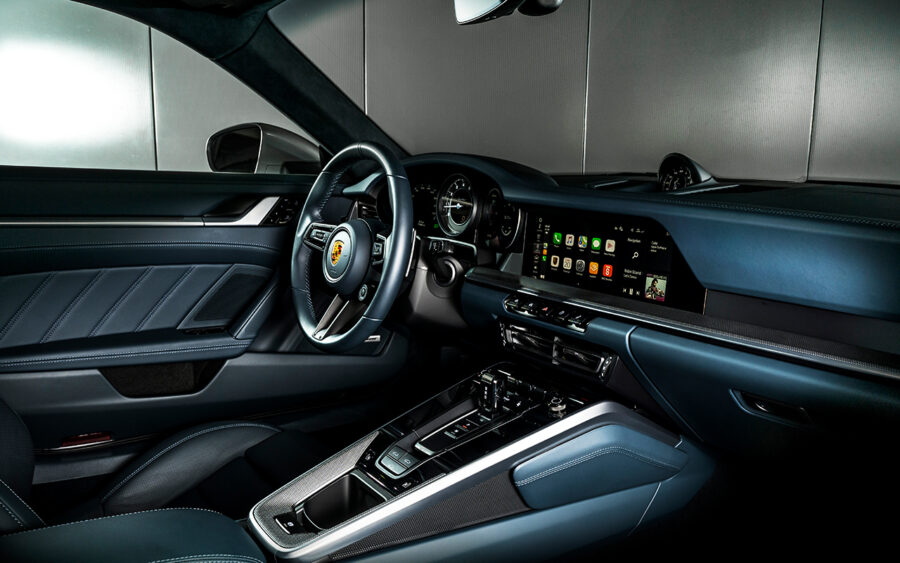
Porsche 911 Turbo (992): our verdict
There is, then, absolutely no doubt the 992 Turbo is a blinding creation, but despite all this, does it really have a place in today’s automotive world? On the face of it, the 444bhp Carrera S and 641bhp Turbo S bracket the Turbo’s position. For us, it’s not so clear-cut. For a start, the Turbo simply isn’t cheap enough when compared to the S. Whether you consider either the £21,450 gap between cars (seen in black-and-white on Porsche’s online configurator) or the reduced spend of £12,376 commanded by adding PDCC and PCCB (thereby lessening the technology gap between the two ultra-911s), when you’re spending £140,000 on a new 911, finding another fifteen percent to have an S, regarded as the ultimate street variant, isn’t likely to be that much of a stretch. Also, we were kind of hoping that with its non-Sport chassis, the Turbo might have been a better cruiser — a pseudo-long-distance GT — than the S, but no, it had the same tyre roar and firm-edged ride that its 641bhp sibling demonstrates. And its mpg and CO2 stats are identical to the more powerful car, meaning there’s no advantage to be had with ‘just’ 572bhp.
It pains us to say it, then, but the Turbo feels ever so slightly pointless, especially given the existence of the GTS and Turbo S models. But fret not, dear reader! We have an idea: a bit of product rationalisation might work well in Turboland. For example, perhaps keep the 572bhp Turbo’s specification for the 911 Turbo Cabriolet and make the 641bhp Turbo S a Coupe-only flagship.
That would work, wouldn’t it? As it is, what you have here is a searingly fast and totally sensational car to drive, but one we reckon you probably shouldn’t buy. That said, in an age of hybrid this and electric that, we should all take comfort in the fact the 911 Turbo exists at all, never mind having four of these stunning things to choose from.

